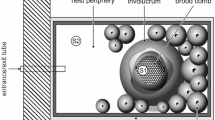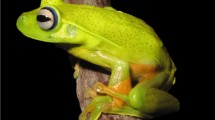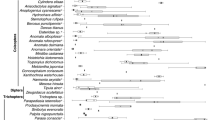Abstract
We analysed, under laboratory test conditions, how German cockroach larvae oriented their outgoing foraging trip from their shelter. Our results stressed the importance of external factors, like availability and spatial distribution of food sources, in the choice of a foraging strategy within their home range. When food sources were randomly distributed, larvae adopted a random food search strategy. When food distribution was spatially predictable and reliable, cockroaches were able to relate the presence of food with a landmark during a 3-day training period and to develop an oriented search strategy. Cockroaches were able to associate learned spatial information about their home range to the presence of food resources and then to improve their foraging efficiency. However, conflict experiments revealed that detection of food odour overrode learned landmark cues.
Similar content being viewed by others
Author information
Authors and Affiliations
Additional information
Received: 16 October 1999 / Accepted after revision: 18 July 2000
Rights and permissions
About this article
Cite this article
Durier, V., Rivault, C. Learning and foraging efficiency in German cockroaches, Blattella germanica (L.) (Insecta: Dictyoptera). Anim Cogn 3, 139–145 (2000). https://doi.org/10.1007/s100710000065
Issue Date:
DOI: https://doi.org/10.1007/s100710000065




